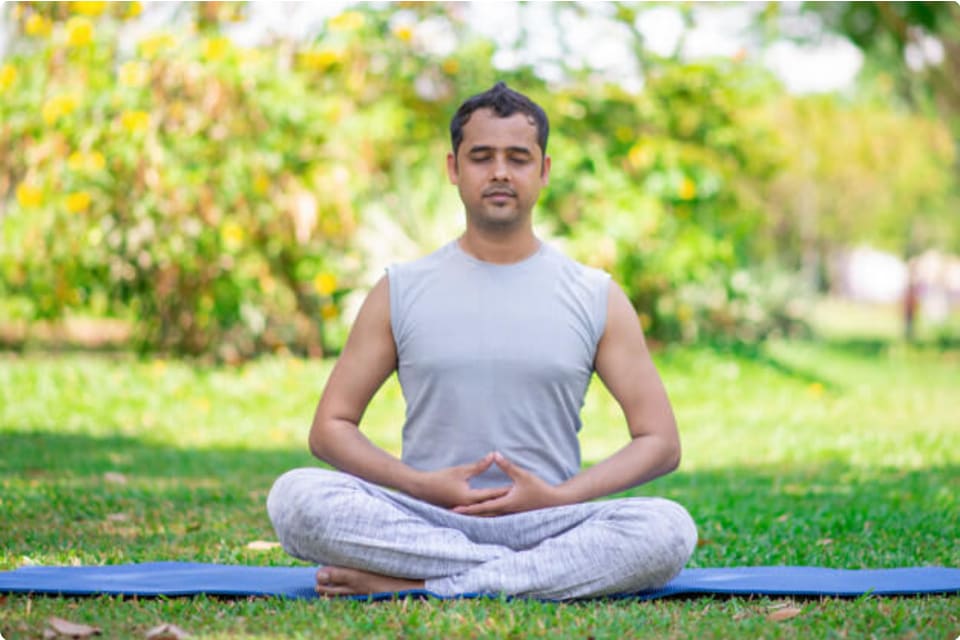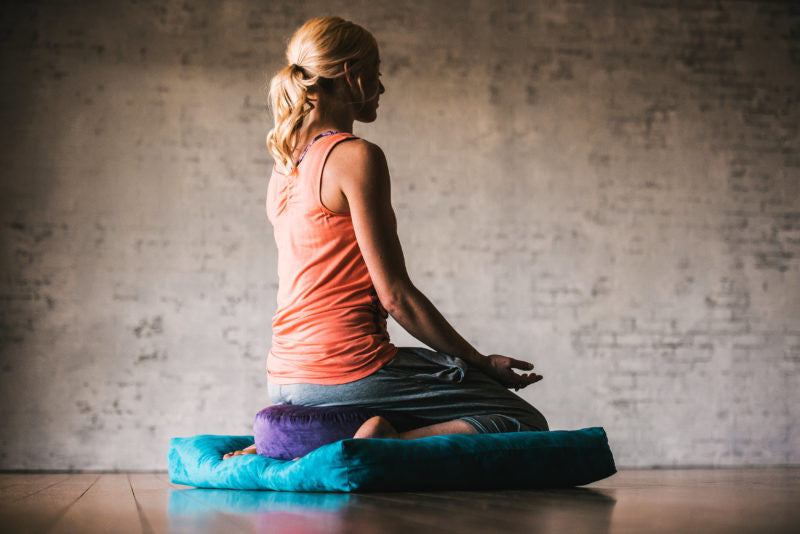How to Meditate? Exploring Various Methods for a Peaceful Mind
How to Meditate? Exploring Various Methods for a Peaceful Mind
Blog Article
Begin Your Journey: Straightforward Actions on How to Meditate for Newbies
Reflection, commonly perceived as an evasive method scheduled for the experienced, can in fact work as a foundational tool for any individual looking for quality and calm in their everyday life. By recognizing its fundamental concepts and developing a conducive setting, newbies can unlock the possible benefits of this practice. As you begin to discover the important actions-- such as grasping and locating an appropriate area breathing strategies-- you may discover obstacles that could improve your experience. The trip of reflection holds even more deepness than one may expect, welcoming more exploration right into its transformative aspects.
Comprehending Meditation Basics
Meditation serves as a powerful tool for boosting psychological quality and psychological well-being. At its core, meditation is a method of concentrated interest and understanding, enabling individuals to cultivate a deeper understanding of their feelings and thoughts. By involving in this discipline, practitioners can achieve a state of relaxation and mindfulness, which can dramatically reduce stress and anxiety and anxiousness degrees.
Understanding the basics of meditation entails acquainting oneself with different methods, such as mindfulness, loving-kindness, and copyright. How to meditate?. Each technique has its unique approach, yet all share a common goal: to cultivate a sense of inner peace and self-awareness. Newbies must start with easy methods, such as concentrating on the breath or observing thoughts without judgment
Developing a routine reflection routine, even if just for a few minutes each day, can yield substantial advantages over time. Eventually, reflection is not merely a retreat from truth; it is an extensive journey toward better self-discovery and general mental wellness.
Finding Your Perfect Area
Creating a favorable atmosphere for meditation is vital for optimizing its advantages. Your picked area ought to promote serenity, enabling you to concentrate inward without distractions. Begin by selecting a location that feels risk-free and comfortable, whether it be a silent corner of your home, a garden, or a local park.
Next, take into consideration the atmosphere. Soft lights can improve leisure, while natural light can rejuvenate your spirit. Guarantee the room is devoid of clutter, as a tidy setting promotes a clear mind. In addition, incorporating aspects like plants, candles, or soothing art work can assist develop a serene atmosphere.
Audio plays a considerable role in your reflection room. Go for a quiet area to reduce disturbances, or make use of soft background songs or nature sounds if you locate silence unsettling (How to meditate?). The temperature should additionally fit; neither also chilly neither also warm, to stop disturbance during your practice
Last but not least, individualizing your room with meaningful items-- such as crystals, photographs, or purposeful quotes-- can produce a much deeper connection to your practice. By attentively curating your environment, you established the stage for a much more reliable and extensive reflection experience.
Picking a Comfortable Position
Discovering the best position for meditation is vital to preserving emphasis and comfort throughout your practice. The ideal stance permits both physical stability and mental performance, making it less complicated to focus on your meditation objectives.
If this position is uncomfortable, think about utilizing a cushion to elevate your hips, which can relieve strain on your knees and back. A chair can supply the necessary support, permitting your feet to relax level on the ground, ensuring security and convenience.
You might likewise choose to lie down if sitting is not suitable for you, however beware, as this can lead to drowsiness. Whatever position you choose, make certain that your body is relaxed yet sharp. Keep your shoulders back and your hands resting easily on your lap or knees. Inevitably, the most effective placement is one that really feels natural to you and enables you to preserve focus, promoting a deeper link with your meditation practice.
Breathing Methods to Start
Starting your meditation experiment efficient breathing methods can considerably improve your experience. Breath functions as the foundation of reflection, providing a focal point that aids anchor your mind and grow mindfulness.
To start, practice diaphragmatic breathing, which engages the diaphragm and promotes deeper inhalation. Sit conveniently, with your back straight, and place one hand on your upper body and the other on your abdomen. Breathe in deeply with your nose for a matter of 4, making sure that your abdominal area climbs while your breast stays reasonably still. Hold your breath for a matter of four, after that exhale gradually via your mouth for a matter of six, enabling your abdomen to drop.
One more useful technique is the 4-7-8 technique. Inhale through your nose for a count of 4, hold your breath for 7 matters, and breathe out slowly with your mouth for eight counts. This pattern not just relaxes the mind but likewise reduces anxiety, making it simpler to work out into your reflection practice.
Explore these methods to locate what reverberates look here best with you, and bear in mind to keep a relaxed posture and an open mind as you begin your trip into meditation.
Tips for Uniformity and Development

Developing a welcoming meditation room is you can check here additionally critical. Pick a silent area where you feel comfortable and cost-free from diversions. Having a devoted spot strengthens your commitment and encourages you to return regularly. In addition, think about making use of assisted reflections or reflection apps, which can supply structure and range to your sessions.
Start with short durations, gradually enhancing the moment as you come to be much more comfy. This incremental method not just makes reflection less overwhelming but likewise permits your technique to grow organically. Tracking your progression in a journal can also be practical; noting your experiences and feelings after each session can enhance self-awareness and motivation.
Finally, keep in mind that reflection is a personal trip. Endure yourself and embrace the learning procedure, recognizing that uniformity and growth are developed in time.
Final Thought
In conclusion, meditation serves as an important technique for promoting psychological clearness and emotional well-being. By comprehending the basic principles of reflection, selecting a suitable room, embracing a comfy stance, and making use of efficient breathing strategies, individuals can get started on a fulfilling meditation trip.
Understanding the essentials of reflection involves acquainting oneself with different techniques, such as mindfulness, loving-kindness, and transcendental reflection. Eventually, the best placement is one that really feels natural to you and permits you to maintain emphasis, facilitating a much deeper connection with your meditation technique.
Establishing a regular reflection practice can dramatically enhance your mindfulness trip and individual growth. Additionally, take into consideration making use of led reflections or reflection applications, which can offer structure and selection to your sessions.

Report this page